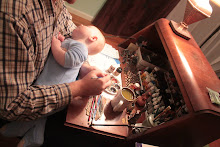The book itself is very gripping. Mr. Crowley describes the various battles in detail, using letters and memoirs of those involved to get the feel of combat. You can feel the exhaustion and elation of the sides during skirmishes, and the horror of battlefields awash in blood. Mr. Crowley also describes the political machinations of the various League partners and the Ottoman court, so you get a feel of why certain outcomes were achieved. I highly recommend this book. (it also has 83 reviews of 4 stars or better on Amazon)
Reading this book has really stoked my interest in naval battles for this period, and I looked first at Langton miniatures, which are truly lovely (and exacting). However, at £7 for a single 1/1200 galley, it would be extremely costly to do much more than a few ships per side for a skirmish. Lepanto had over 200 ships just on the Christian side... so another direction will have to be taken.
First rate galleys of this period were fast narrow ships made solely for combat, with 24 or so oars per side, each pulled by three men (mainly slaves). These 144 men were the motor that moved the ships in combat, as sails were rarely used. Ships had an array of heavy prow cannon, and were also armed with smaller guns on the bow, then were packed with missile armed troops (mainly arquebusers, archers for Turkish Ottomans), and further packed with heavily armored infantrymen. The goal in battle was to ram another galley, and send infantry over to capture it, meanwhile pouring on the supporting fire from the missile troops. Don Juan's flagship, the Real, had many hundreds of men on board, and during the battle of Lepanto, both flagships had constant reinforcements from the embarked infantry of other galleys.
Here are some links I found surfing around:
http://stokesinternet.com/games/rengalleys.html
http://gonsalvo.com/reports/galleyho.html
http://www001.upp.so-net.ne.jp/a-sasano/english/e-galley.htm
http://www001.upp.so-net.ne.jp/a-sasano/english/e-galley_design.htm
Next up is Embeded


No comments:
Post a Comment